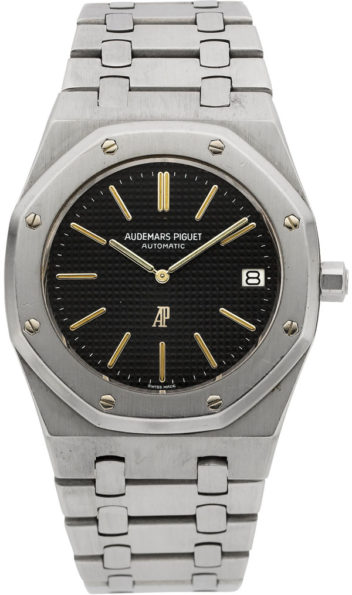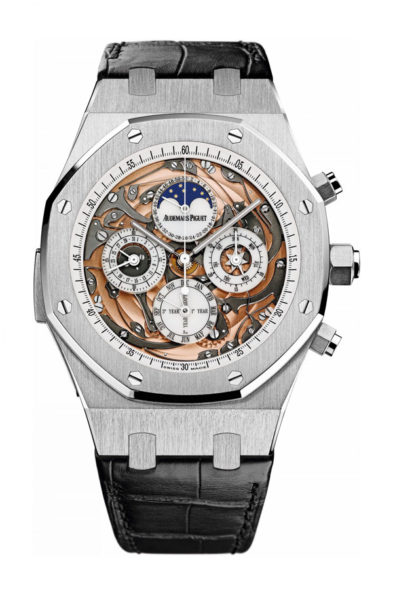Audemars Piguet’s iconic ’70s super-watch continues to evolve and astonish…
In 1970 legendary watch designer Gérald Genta created the now-iconic Royal Oak for Audemars Piguet. Even before the Patek Philippe Nautilus — which he also designed — became a horological sleeper hit, the Royal Oak, originally produced in stainless steel and reportedly costing 10 times as much as many steel Rolexes, had a hardcore following among the watch world cognoscenti.
In 1993 Audemars launched the Royal Oak Offshore chronograph, officially updating Genta’s design for a new era, and these days its fans include the likes of Jay-Z and LeBron James. And the latest awe-inspiring Grande Complication models now go for up to US$1 million.

“The Royal Oak brings together several different elements that all contribute towards its history, legacy and future,” Michael Friedman, Audemars Piguet’s Head of Complications, tells us. And while Genta of course deserves due credit, Friedman points out that another of the era’s design luminaries Jacqueline Dimier “demonstrated the true versatility of the Royal Oak design and how far it could go.”

Dimier oversaw the first gold models that were introduced in 1977 and designed the first complicated models that launched in 1984 with the Royal Oak perpetual calendar, “all highly recognised today as major milestones within the Royal Oak’s evolution and all central to the current place the Royal Oak holds in the minds and hearts of many collectors and enthusiasts.”
That “many” is an important qualifier; the still somewhat esoteric appeal of the watch has helped it maintain its air of exclusivity. “In any medium, design language and form, language can create meaningful connections for some, and not for others,” Friedman notes. “For those that find connections to the Royal Oak, they see a highly-finished watch comprised of great technique and watchmaking expression that has been the canvas for so many beautifully crafted movements, case materials and dial designs.”
While continually incorporating new ideas, materials and complications, Audemars Piguet has always been careful to also offer Royal Oak models that would look right at home in 1970. In 2019, Friedman points out, “we introduced a 39mm Royal Oak in white gold that echoes the origins of the model; we released a highly contemporary and fresh interpretation of the self-winding perpetual calendar in full white ceramic with a blue dial; we unveilled a titanium and platinum self-winding perpetual calendar Ultra-Thin; [and] we released the first extrathin tourbillon Royal Oak in full black ceramic.”

The challenge, Friedman tells us, “is to always keep moving forward, creating for the future, while honouring and respecting the great work of the past. The Royal Oak has such a strong foundation due to its design, which itself was deeply rooted in Audemars Piguet’s long history of unconventional case designs. As long as the form remains a canvas for beautiful and complex finishings that demonstrate human ingenuity and great craft, we feel we are on the right path.
The link of the Royal Oaks of the past, present and those yet to be created are the watchmakers, artisans and technicians themselves. They simultaneously guard the traditional techniques of the past, problem-solve for the present and conceptualise for the future.”
From Gérald Genta to Jay-Z and the next generation of watch guys and superstars who will wear their Royal Oaks, this is one icon that, much like the Porsche 911, may alter slightly over the years but will never get old.
BY JARED PAUL STERN
For the full article grab the February 2020 issue of MAXIM Australia from newsagents and convenience locations. Subscribe here.




